To say that this COVID-19 crisis has changed our personal and professional lives would be an understatement. And the notion of going ‘back to normal’ has also changed - we can expect some changes, ongoing to our workplaces even when reopening after COVID-19.
Prior to this pandemic, it was common for companies to have a few individuals or even a team that would regularly work remotely. However, this unprecedented global event has forced all businesses from every industry to explore and implement brand new processes to adapt to this new normal. And as the virus continues to spread and countries are facing their second wave of confirmed cases, it seems that this indefinite period of remote work will last longer than we all hoped. It’s the time to stay vigilant and ask ourselves: what’s next?
We are all anticipating the time when we will head back to the physical office. And though it will be a fantastic time to reconnect with clients and colleagues after the order for social distancing lifts, the return to the workplace will be an uneasy time for many. Whether it is concern about the ongoing situation or perhaps knowing or even experiencing loss of their own, it’s important to take necessary measures in design to ease people’s concerns about returning to work after COVID-19. Greater efforts for hygiene and safety in the office will be one the forefront of everyone’s minds, so it’s vital to make the most out of the time you have now and to consider a variety of solutions when reopening the physical office.
1. The 6-Feet Office Concept
By now, you have probably had personal experience with standing 6-feet apart from another person. This practice is necessary to create enough distance to make sure you don’t spread any unnecessary germs or even contract the virus from a stranger. And while getting the OK to head back to the office is a great sign that our healthcare systems are making great strides in defeating COVID-19, it will be a while until a preventative or absolute cure will be made available. So when we do head back to the physical office in the near future, everyone must continue to stay alert and observe the measures given by medical professionals.
Benching desks is a common configuration found in almost every office. Space planners particularly love placing benching stations together as it creates a space that encourages collaboration while making the most out of the given space. However, most of the benching systems currently in our offices will need a few adjustments in order to adhere to the “6-feet apart” guideline from the Centers for Disease Control and Prevention. Rather than setting up workstations to directly face one another, sequence the desks so that there is more physical space between individuals.
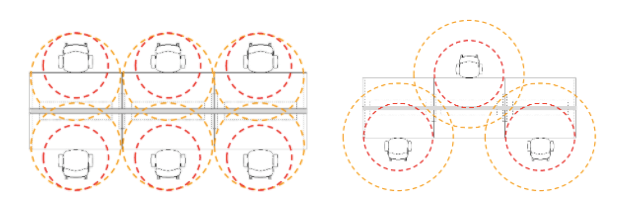
The new norm should not include rows and rows of tightly packed 48”x24” desks. While this may have been the common practice before, failing to observe this new configuration could pose a myriad of risks. Not only will there be less airflow and circulation, but tight and confined work areas can quickly turn into disease breeding grounds. With the dormant nature of this virus, if one person in that cluster falls ill, chances are everyone in that area is already sick but have yet to show symptoms.
Another area to consider adjusting is the conference room. While conference rooms maximize the occupancy of the space, it’s important to make sure everyone in the room feels comfortable and at ease. For the time being, it may be valuable having a cap on maximum occupants and to de-densify the amount of seating available in the room.
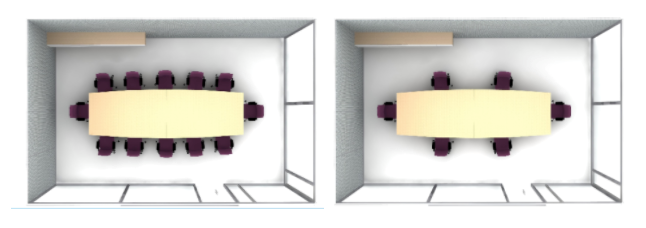
2. Implementing Physical Barriers
While the open office concept is still the preferred layout for many companies, it might not be the best solution when reopening the physical office after COVID-19. At this moment, the most important thing businesses will be thinking of is how they can continue protecting and ensuring the safety of everyone working in the space. Although some businesses may not have the resources to start a complete redesign of their workspace, adding physical barriers will be a quick and relatively affordable short-term solution during this time. Here are a few to consider adding into the space:
Attachable Partitions
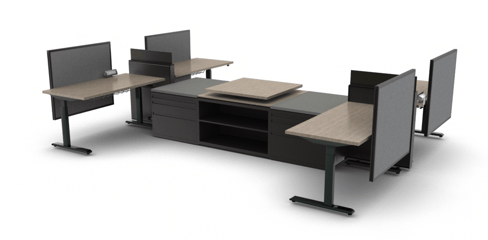
Adding a privacy panel or to the front and sides of desks can help shield any sneezes and contain germs from other people. And if you already have a panel configuration installed, reassessing its height and opting for a taller one could provide better a barrier of protection.
Storage Units
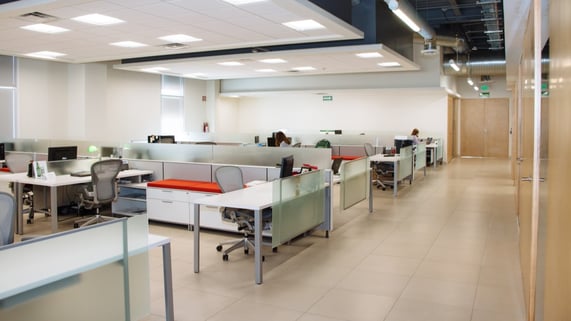
Not only can it create more space between desks, but it allows for more storage in the workstation. This can give employees more room to bring their own personal protective equipment (PPE), sanitizers, vitamins and medication. Adding storage units will not only help you with the overall layout, but also help the end-user to be prepared at all times. People will also need individual storage space as we discourage the use of shared storage.
Plants
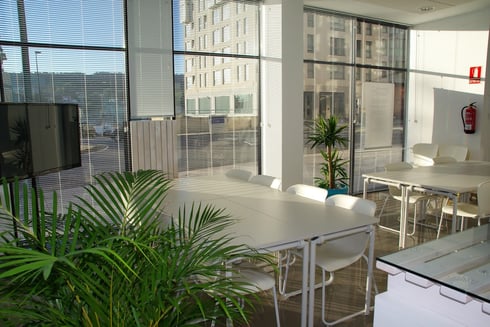
Bringing some greenery into the office can also help with spacing the office out. Whether it be delimiting certain areas or using them as dividers in benching systems, having plants here and there around the office will be a great addition to the space while serving a bigger purpose.
3. Material Swaps
When reassessing the office space, many may be quite surprised to see how many surfaces cannot be easily cleaned or disinfected. Whether it be a pinnable idea board made of cork or swatches of fabric to embellish meeting rooms and desk stations, there are a number of areas that we don’t often think of cleaning. However, as we continue to learn more about the shelf life of the COVID-19 germs, it will be worth considering transitioning your fabric surfaces to materials with a more glossy finish. The difficulty with fabric or other rigid materials is that they are porous and can easily trap bacteria. And because these accent pieces are often design elements, they’re most likely forgotten about or overlooked. Most of your clients will stay in the office for over 7 hours a day, so it’s important to consider making these switches to ensure their work area is as safe as possible.
Compared to rigid or absorbent materials, glass or laminate surfaces are much easier to clean and sanitize. Especially during this time when everyone is still getting used to taking their hand hygiene much more seriously, making the cleaning process as simple and accessible as possible will ensure that the end users will follow through with the sanitizing rituals. These small swaps can help set those sharing the workspace up for success while protecting each other from passing on germs.
So referring back to our cork board example. While it is a great medium to circulate ideas and collaborate with the rest of your team, a simple switch would be installing a “whiteboard” made of glass. Not only does it continue to support your team in brainstorming solutions together, but switching to a slick surface like glass will make cleaning up much easier and quicker.
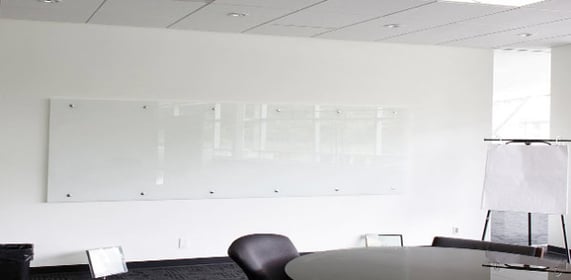
Utilizing the Power of Design for a Safe Workplace
So, what’s next? We know that reopening the physical office is the first priority for the majority of businesses. However, it’s important to make the necessary changes to be able to do it the right way and the safe way, creating safe offices after COVID-19. Thankfully, we can utilize the power of design to rethink our office layouts to generate safe working environments in line with the Centers for Disease Control and Prevention. With the added time, resources and efforts to reconfigure the office, we can do our own part in limiting the spread of the virus and take one step closer to eradicating it.
For further assistance on space planning your brand new office, you can contact us at covid-19team@kisptech.com or give us a call at 416-499-2457 ext 2703. If you would like more information about our Visualization services, please click here to see our full list of service offerings.


